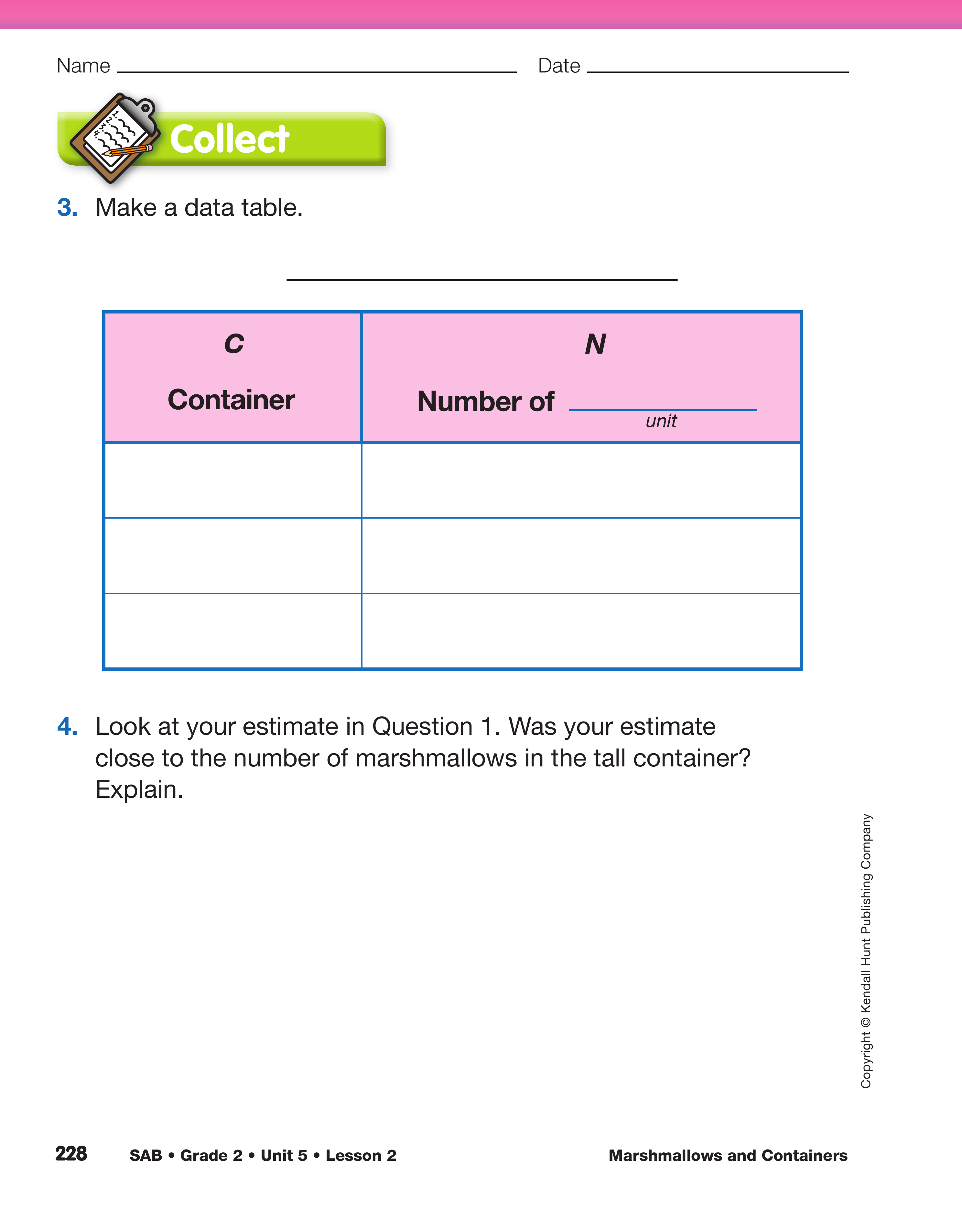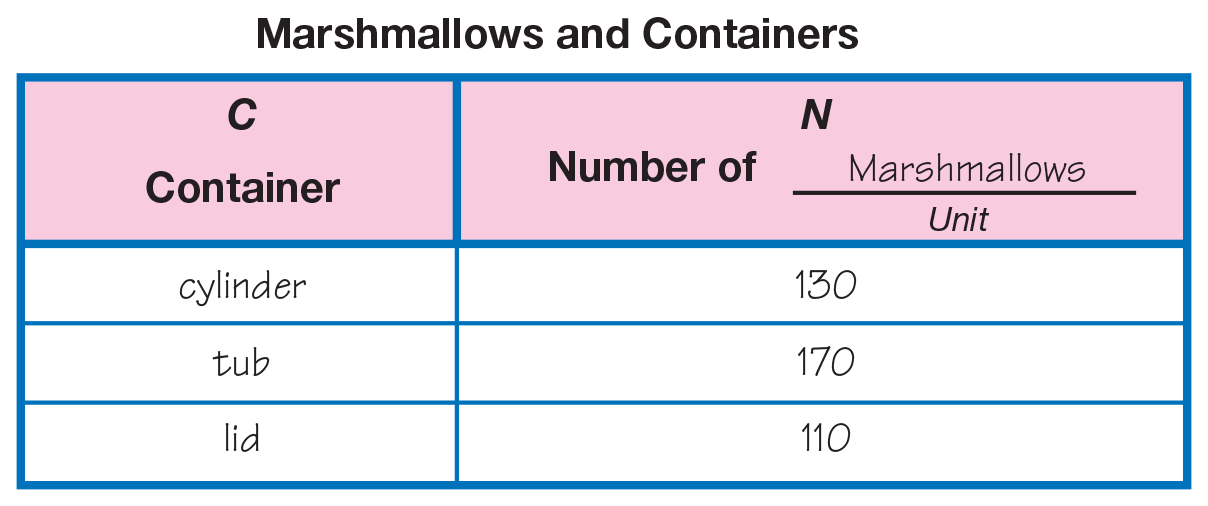Marshmallows and Containers
Est. Class Sessions: 2–3Developing the Lesson
Part 2: Collect Data
Prepare Data Table. Display the data table in Question 3 on the Marshmallows and Containers pages. Remind students that data tables help scientists organize data and look for patterns in the data. Examine the data table with the class and discuss the two columns. Fill in the left side together. Assist students as they fill in the top of the right column.
Ask:
Collect and Compare Data. Encourage students to group their marshmallows by tens to count them. As students collect data, observe their grouping and counting skills. Encourage the use of tens frames or the 200 Chart to assist with this process. See Figure 2 for a sample student data table.
After students complete their tables, encourage them to compare their data with one another.
Ask:
If one or two groups have numbers that are much larger than the rest of the class, discuss. Possible reasons include:
- The containers were not filled to the same height;
- Pairs may have pushed marshmallows into the container;
- Pairs may have gently dropped marshmallows into the container;
- Pairs may have miscounted; or
- The marshmallows are not a uniform size.
In Question 4, students will use the data to assess the estimates they made in Question 1.

















